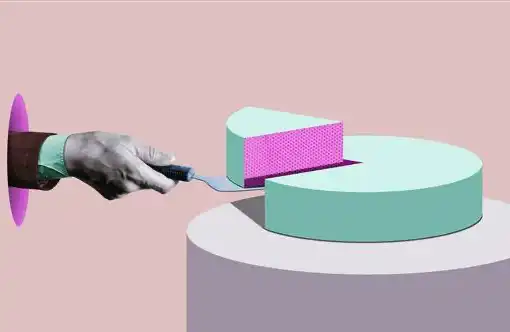Xiao Feng: Ten Economic Rules of the Metaverse
Original title: "Xiao Feng: Ten Economic Rules of Metaverse"
Original author: Xiao Feng, Wanxiang Blockchain
Warm congratulations to the official establishment of the Metaverse 30 Forum today. The topic I want to share is "Ten Economic Rules of the Metaverse". Everyone knows that it was Xiao He who first emerged in the metaverse. Now when we discuss the economic rules of the metaverse, a large part of it must be speculation. So, there are bound to be a lot of things that will prove wrong in the future. But I firmly believe that the economic rules of the metaverse must be different from the economic rules of the Internet, just as the economic rules of the Internet are different from the economic rules of manufacturing, and there must be differences. Let's all work together to find out what's different.

First of all, from the property rights system From the perspective of the capital income distribution system, we can roughly divide it into three models in the past. The industrial economic model or the manufacturing economic model is called the "Main Street model". Main Street originally corresponds to Wall Street, which is financial capital, and "Main Street" is industrial capital and industrial capital. The "Main Street Model" is centralized from the perspective of property rights and equity, and at the same time, capital gains are exclusive. At that stage, there will be many big capitalists, such as Ford, Carnegie, Rockefeller and other big capitalists on the main street. But when it comes to the Silicon Valley model, it can also be called the information economy model. The property rights are dispersed. The founders, A, B, and C rounds of financing, and a lot of equity is allocated to employees in the form of employee options, because its equity structure is decentralized. , so there will be no big capitalists in the Silicon Valley model, most of them are professional managers, there are founders + professional managers, and it is difficult for big capitalists like Carnegie and Rockefeller to appear. From the perspective of capital gains, it has also changed from exclusive to shared, which is a decentralized capital structure and shared capital gains.

< /p>
In the metaverse economic system, the so-called equity system is dissipated, and it may not exist anymore, or even if it exists, its value will be greatly reduced. From a capital gain perspective, it is a shared model. All contributors and participants are organized as stakeholders to achieve large-scale collaboration through smart contracts, so as to share the value realized by the metaverse. This is what I want to say that the capital system may be different.

< /p>
Second, from the law of value creation. The manufacturing economy, Internet economy, and Metaverse economy are also different. In the manufacturing economy, the law of value creation is to maximize the value of the company. In the Internet age, the pursuit of maximizing the value of the company is no longer the pursuit of maximizing the value of the network. Kevin Kelly gave an example called the "fax machine effect". It costs $200 to buy a fax machine, but you join the fax machine network, you can send faxes to others, and others can send faxes to you. The value of the network you enjoy may be worth tens of billions of dollars, far greater than the cost of buying a fax machine. The Internet first pursues "network value maximization", so as to maximize your own value.
In addition, if you bought a fax machine in the morning and another group of people bought a fax machine in the afternoon, the fax machine bought by that group of people in the afternoon is also of value to you increase because you have more faxing options. The fax machine effect explains the Internet very well, and everyone pursues the maximization of network value.
Into the metaverse, the metaverse is a space concept, digital space, virtual world, parallel universe. On the basis of pursuing the maximization of network value, we will further pursue the maximization of the value of the entire space. Especially in the virtual space, which is not restricted by many physical rules, there is more room for development. Everyone must find ways to create value in the virtual world, digital space, and parallel universe, and pursue its value maximization.

< /p>
Third, from the perspective of value distribution. The manufacturing industry is characterized by high fixed costs and increasing marginal costs. Therefore, when building 1 car and building 100 cars, the marginal cost of each additional car is increasing. Therefore, the pricing model of the manufacturing economy basically uses cost plus and profit margin to price the products of the manufacturing industry. We can call it the "fee model". It is impossible to have a free model in the manufacturing industry. It must be a fee-based model, or the core model is the fee-based model. In the Internet age, the "free model" is the main model, because the Internet economy has high fixed costs, but its marginal costs are basically zero. So the wool can come from the pigs, and the dogs will pay for it. It looks free, but in fact free things may be more expensive, and may be more expensive than the "rare is more expensive" manufacturing rule. The highest market value of a manufacturing company is several hundred billion U.S. dollars. In the Internet age, it can have a market value of several trillion U.S. dollars, because your marginal cost is zero and you can earn more.
Is the metaverse like this? no. Due to the dissipation of capital in the metaverse, capital gains are shared and shared by all participants. Thus, the metaverse is prosumers held together. Therefore, I borrowed a very popular term "X to Earn" in metaverse business at present, earning while playing, earning while exercising, etc., and transformed it into "Player to Earn" players, participants or "stakeholders". "Earn returns and share the value of the metaverse together.
Fourth and fifth, from the perspective of the "player" of Player to earn and the "earn" of Player to earn, player is the benefit in metaverse economy Stakeholders, including developers, creators, contributors, consumers, investors, all participants are players of the Metaverse. NFT is a symbol of all assets in the Metaverse, and is generally equivalent. When creating, issuing, operating, using, and trading NFTs in the Metaverse, it is actually the Player who manages this asset in the Metaverse. Operating the assets of the Metaverse is what Player does in the Metaverse, making money by operating NFT assets.
How is "earn" defined? Players create, manage, and use metaverse assets to earn returns, and the earned returns are expressed in the format of Token, so what they earn is Token. The basic business logic of the entire metaverse is "Player NFT", and then earn (earn) Token. The blockchain is used as a distributed ledger, which is used for this kind of Play to earn accounting. We have already seen some "Player to earn" application scenarios appear, but only Xiaohe has a sharp edge. I think the metaverse will basically be such a core business logic in the future.

< /p>
Sixth, from the perspective of the capital market of the metaverse, the capital market of the metaverse is completely different from the capital market we are familiar with now. There will be two sets of capital market systems in this world in the future. One set is shareholder capitalism based on the equity system of the industrial economy and the Internet economy and the capital income distribution mechanism. Based on shareholder capitalism, the shareholding system is used to distribute one's own equity, so we have established a very good stock market. In the future, under the metaverse stakeholder capital system, these property rights and capital gains will be shared, based on blockchain distributed ledgers, digital wallets, smart contracts, NFT, Token, in the form of programmable currency and programmable assets , to establish another capital market that can adapt to the metaverse, and that capital market is called "DeFi".
Seventh, from the perspective of the company's organizational structure, the company's organizational structure is gradually moving towards the metaverse decentralized autonomous organization DAO. The decentralization of business organizations is a trend, which is to build external market functions into commercial organizations to reduce transaction costs. Transaction costs include search costs, matching costs, logistics costs, payment costs, etc. In the era of workshops, the exchange was completely dependent on the external market. Therefore, its transaction costs are very high. Finally, with a company, the main function of the company establishment is to build many market functions into the enterprise. Later, we found that the company's structure is also moving towards distributed.
When the company first started, it had a U-shaped structure and a top-down centralized decision-making structure. Gradually, because of your diversification, a career appeared department. At the same time, because of your globalization, there are regional headquarters. Business divisions and regional headquarters gradually decentralized, and dispersed many rights of the group, thus creating an M-shaped enterprise organization. "DAO" establishes commercial institutions through smart contracts and engages in commercial activities. In fact, it inherits the company's trend from a centralized U-shaped structure to a distributed M-shaped structure, and finally to a decentralized structure. change. The biggest advantage of "DAO" is that the function of market commodity exchange is built into DAO. Through digital currency and digital assets, it has built-in currency system, financial transaction, value settlement, liquidation system, etc., so its friction coefficient will be smaller. From the point of view of the business organization.
Eighth, from the point of view of the decision-making mechanism, people often talk about the blockchain and metaverse as decentralized decision-making mechanisms. I believe that in the future there will be a combination of centralization and decentralization. A centralized decision-making mechanism is an efficient decision-making mechanism. Top-down or a central decision-making is very efficient. Therefore, when efficiency is needed, a centralized decision-making mechanism is useful, while a decentralized decision-making mechanism emphasizes democracy, fairness, and consensus decision-making. I believe that more business scenarios in the future, more business scenarios in the Metaverse should find a balance between extreme efficiency and extreme democracy and fairness, and find a balance between centralization and decentralization. For specific business scenarios, I believe this is the process. In the future metaverse economy, there will also be a good combination of centralization and decentralization.
Ninth, from the perspective of products and services, Metaverse is also different from the Internet. When commenting on the blockchain, people have been asking: what is the killer application of the blockchain? Indeed, compared with Internet applications, blockchain does not seem to have any killer applications. The Internet is a protocol stack. The so-called tcp/IP model is a stack of several layers of protocols. All the Internet is open source and open, and there is no way to capture value, so some people say that the Internet is "thin protocols, fat applications." The so-called "fat application", we have seen the emergence of a trillion-dollar large Internet platform, which is very valuable at the application layer, and the value is very large. However, protocols such as TCP, IP, HTTP, and SMTP are open source, open, and license-free. The Internet has made many "fat applications" on the basis of "thin protocols".

< /p>
The blockchain, like the Internet, is also a protocol stack, but the blockchain protocol stack has a built-in currency system and value system, which has become "fat protocol, thin application". The Bitcoin protocol is a case in point, and such a blockchain protocol is worth trillions of dollars. A blockchain protocol with a built-in currency system and value system is a "fat protocol". The protocol layer itself can capture value. This is the biggest difference between blockchain and the Internet. The blockchain protocol is valuable because the blockchain protocol has a built-in currency system and value system. Finance itself is built into the protocol, and the Internet protocol, whether it is the IP protocol, the HTTP protocol, or the SMTP protocol, does not have a built-in currency system and cannot capture value.
When it comes to metaverse economy, the possible result is "fat protocol, fat application". Because the underlying infrastructure protocol of the Metaverse also has a built-in currency system and financial system, its protocol is a "fat protocol", which realizes value and realizes cash at the protocol layer. In the future, the application of the metaverse will combine many digital technologies. In one space, its application should be larger than the Internet, so it may be "fat protocol, fat application".
Tenth, digitalization and virtualization have greatly disrupted the manufacturing industry, and will eventually cause the manufacturing industry to have a "fax machine effect". Making a car has high fixed costs. To produce 100 cars, each car also has its marginal cost. High fixed costs and increasing marginal costs are the characteristics of the manufacturing industry. The characteristic of the network is that the fixed cost is high, but the marginal cost is diminishing or even zero. The design and development of a software requires a high fixed cost, but after the software is made and used by one person or one million people, its marginal cost is close to zero. Manufacturing cannot have network effects without digitization and virtualization. But when the manufacturing industry is sufficiently digitized and virtualized, the manufacturing industry is actually gaining the Internet effect of decreasing cost of scale and increasing returns to scale. Another example is that after all cars are connected to the Internet, buying a car will also have a "fax machine effect". When you buy a car, you will join the Internet of Vehicles with great value.
This is the ten economic rules of the Metaverse I shared. Predicting the future is a thankless task, and what I say may not be right. But I still want to emphasize one point: the economic rules of the Metaverse and the Internet will definitely be different, just like the economic rules of the Internet are different from the manufacturing industry. thank you all!
Original Link
Welcome to join the official BlockBeats community:
Telegram Subscription Group: https://t.me/theblockbeats
Telegram Discussion Group: https://t.me/BlockBeats_App
Official Twitter Account: https://twitter.com/BlockBeatsAsia
 Forum
Forum OPRR
OPRR Finance
Finance
 Specials
Specials
 On-chain Eco
On-chain Eco
 Entry
Entry
 Podcasts
Podcasts
 Data
Data

 Summarized by AI
Summarized by AI







